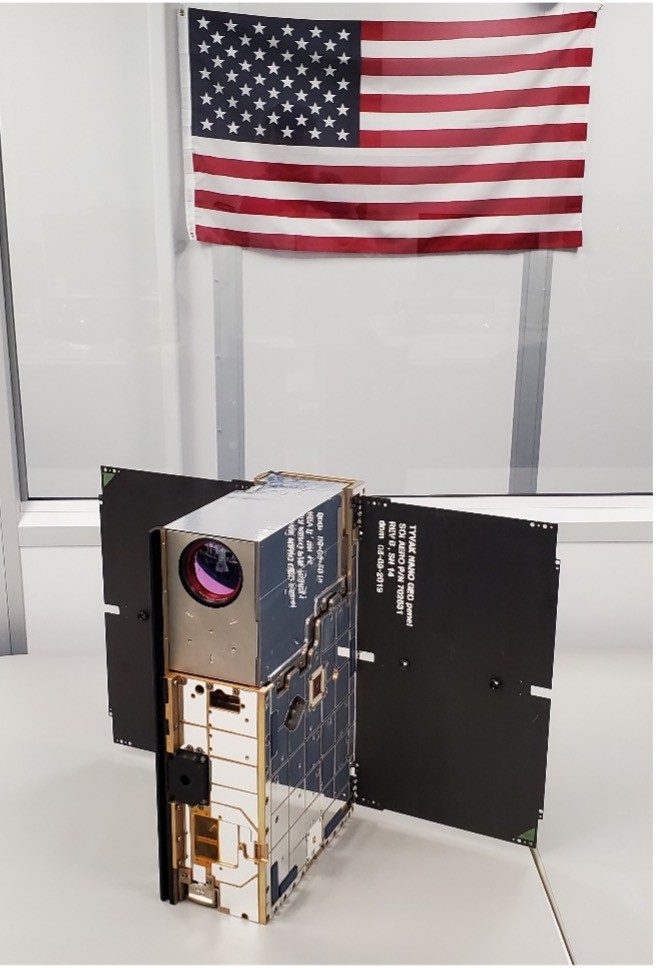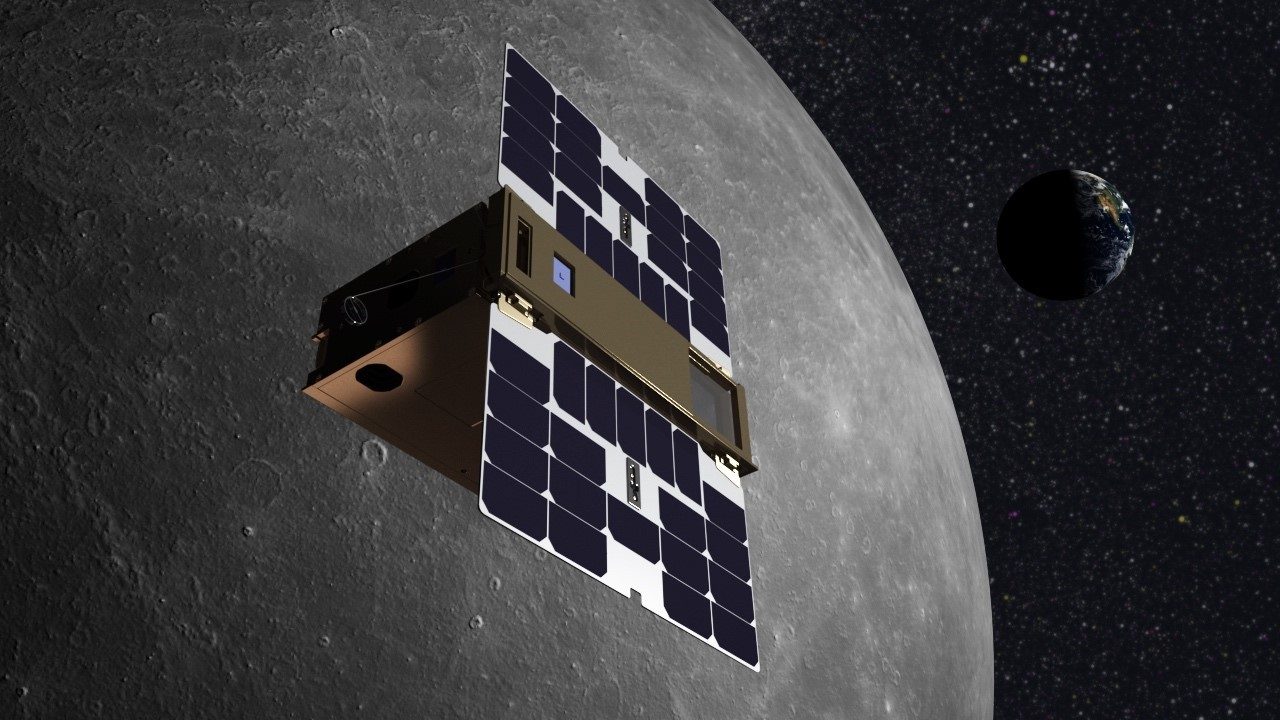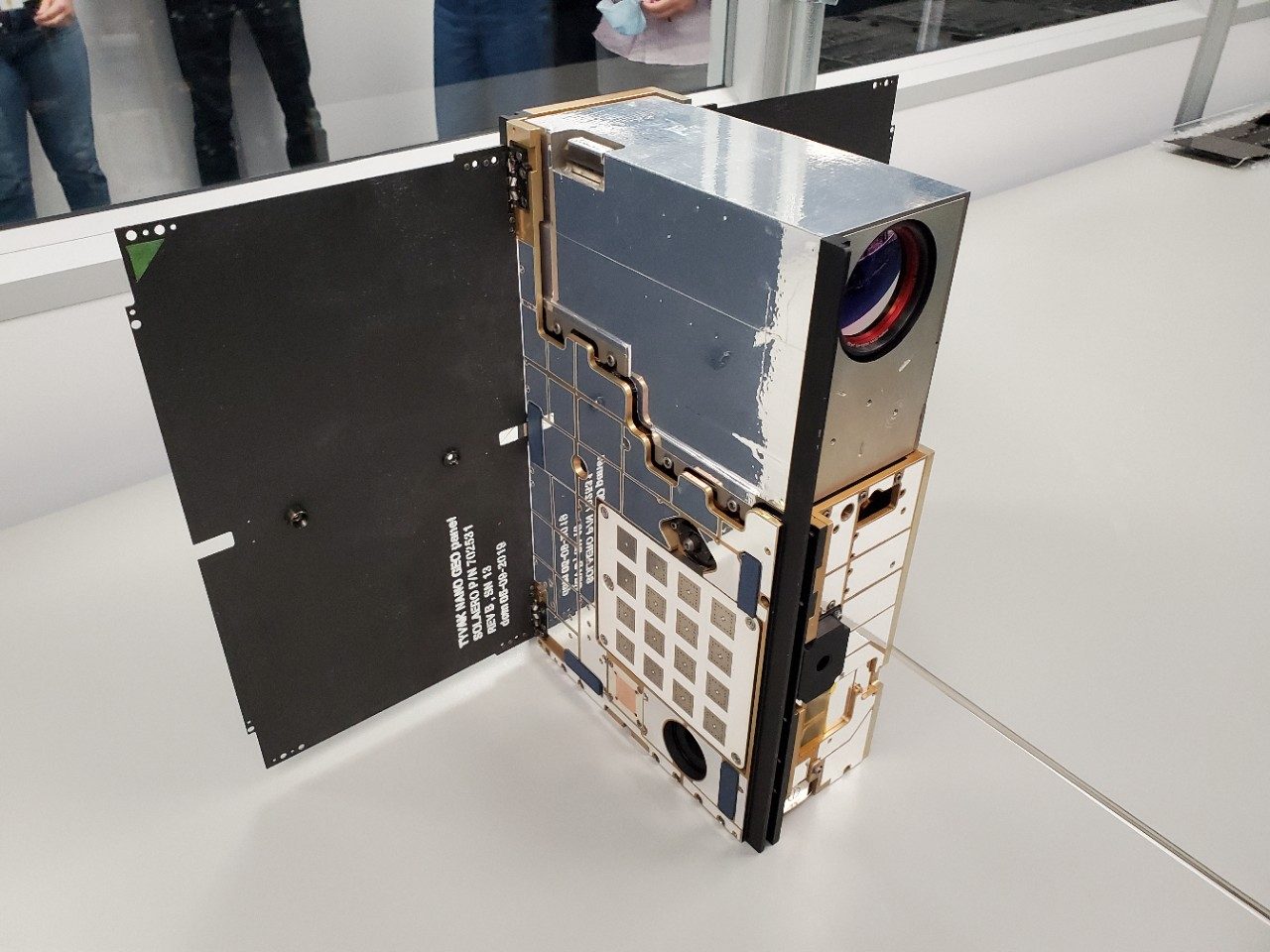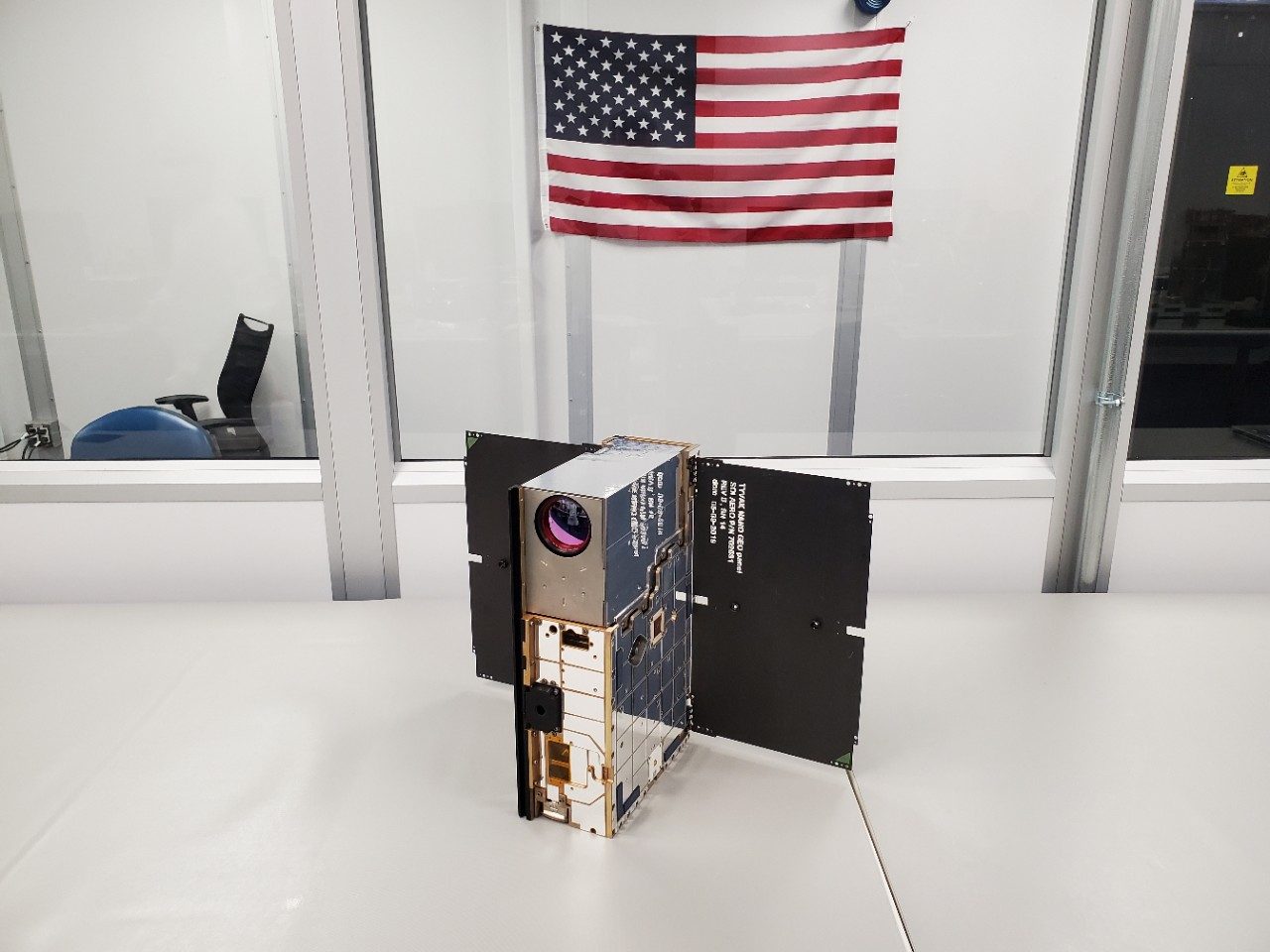As NASA prepares to return to the Moon for the first time in 50 years with the Artemis program, all eyes are cast toward Earth’s ever-present neighbor.
With humankind’s presence there and a desire to to build up an eventual full-scale lunar economy – there is an increased need now to prove out future, applicable technologies with lower cost methods. Lessons from small satellites like LunIR can help us learn about how to better explore the Moon and other planets in our solar system.
Why Map the Moon?
LunIR – or Lunar Infrared Imaging – is a technology demonstration mission with a goal to prove out a novel type of infrared camera. While it was ultimately unable to complete its mission in space, through the LunIR mission we learned how to build this new type of compact, infrared sensor that has capability to capture things like thermal signature and material composition.
In the future a camera like the one pioneered on LunIR could be used add to humanity’s knowledge about the Moon’s composition, structure and interaction between solar particles and lunar dirt. These efforts will help reduce risk and shape future human lunar missions.
Bite-Sized Technology, Designed for Deep Space
The compact size of these satellites doesn’t mean they are any easier to build than larger missions. Engineering teams must figure out how to pack a lot of technology into a small area of real estate – all while designing the satellites for the rigors of deep space.
The shoebox-sized LunIR was built and integrated by Terran Orbital of Irvine, California. The spacecraft’s first-of-its-kind infrared sensor and unique micro-cryocooler were both developed by Lockheed Martin.
Built at Lockheed Martin’s Optical Payload Center of Excellence in Sunnyvale, California, LunIR’s infrared sensor is special because it can image targets in both day and night. It's designed to detect and image in the mid-wave IR spectrum at a much higher temperature than similar sensors. This particular light spectrum enables the measurement of both reflected sunlight and thermal emissions.
The spacecraft is designed to image at these higher temperatures without overheating thanks to its highly compact and innovative micro-cryocooler, built by the company’s Advanced Technology Center in Palo Alto, California. In fact, LunIR’s micro-cryocooler is actually the lightest, long-life space cryocooler ever built. A variant of this same technology is being used on two larger upcoming NASA missions and could be applied to future missions to enable a wide range of detection on the IR spectrum for less cost.
Both components are extremely lightweight and designed to be compatible with a small area of real estate. The Lockheed Martin team also applied additive manufacturing techniques to further reduce overall mass of the spacecraft’s instruments – saving time and cost for the mission.

The Moon’s New Neighbors
Delivered to NASA June 10, 2021, LunIR is among 10 small satellites that hitched a ride along with NASA’s Orion spacecraft on the Artemis I mission and its massive Space Launch System rocket in November. The public-private partnership for this particular spacecraft represents NASA’s Next Space Technologies for Exploration Partnerships (NextSTEP).
The group of tiny spacecraft serves as small-scale technology and science demonstrations. Their compact size made them a perfect fit to catch a ride with the existing launch and endeavor to experiment with new technologies that could be upscaled later.
In general, small satellites like LunIR, also known as CubeSats, aren’t just being used for lunar exploration, but for many kinds of space activities. This is because of their unique ability to pioneer new technologies at an affordable price.
LunIR is one of many threads in Lockheed Martin’s partnership with NASA on exploration, which stretches back more than 50 years to the Apollo missions. The company’s more recent projects include the Orion spacecraft, the company’s selection for the Commercial Lunar Payload Services (CLPS) program and an exciting new early development effort for lunar mobility vehicles with General Motors.
As more companies partner together to send small but mighty explorers out into our universe, the potential for big discoveries is endless.







